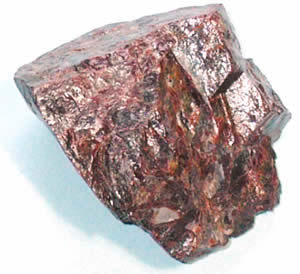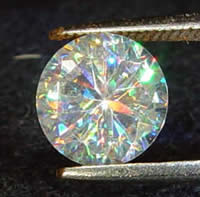|
|
Your Details
|
|
Your Details
|
Reviewed By Andreas Zabczyk
All About Rutile in GemstonesRutile, a mineral composed primarily of titanium dioxide, plays a significant role in the gemstone industry due to its unique properties and aesthetic appeal. Often found as needle-like inclusions within other gemstones, such as quartz, rubies and sapphires, rutile in gemstones can enhance the visual characteristics of these stones, contributing to their beauty and desirability. Additionally, rutile is the primary cause of optical effects like asterism (the star effect) and chatoyancy (the cat's eye effect). These unusual phenomena are created by microscopic rutile inclusions within the gemstones. In rutilated quartz, rutile becomes visible through large needle-like inclusions, forming captivating and individualistic patterns. Browse through our rutile quartz for sale. 
Rutile Rough Stone
But what exactly is rutile? Where does it come from? Can you buy gemstones made entirely from rutile? Rutile is a mineral composed primarily of titanium dioxide. Its refractive index is among the highest of any known mineral, at 2.616 to 2.903. Diamond, by contrast, has a refractive index of 2.417 to 2.419. Natural rutile varies in color and can be golden, blood red, reddish-brown or black, with the color resulting from the presence of iron (sometimes up to 10%). It has a density or specific gravity of 4.20 to 4.30 and a hardness rating of 6 to 6.5 on the Mohs scale. The most important rutile deposits are in Sierra Leone in West Africa where 30% of the world's supply is located. Other deposits are found in Minas Gerais, Brazil, the Swiss Alps and Arkansas in the USA. 
Synthetic Rutile
Natural rutile is rarely found as a gemstone (it is mostly seen as inclusions in other gems) and is classified as a collector's stone. Synthetic rutile was first produced in 1948, by a special variation of the Verneuil method, using extra oxygen. The high refractive index gives an adamantine luster and strong refraction that leads to a diamond-like appearance. Synthetic rutile was sold as a diamond simulant in the 1950s, under names such as Titania. However, because rutile is not especially hard, it was eventually replaced by more durable diamond simulants. Rutile has some important industrial applications. Finely powdered rutile produces a brilliant white pigment that is used in paint, plastic, paper, food, and other materials that call for a bright white color. Titanium dioxide is also a key ingredient in many sunscreen products. Nanoscale particles of rutile are transparent to visible light but are highly effective in the absorption of UV light. So sunscreens made with titanium dioxide can protect against UV induced skin damage. |
